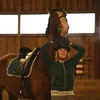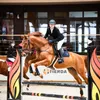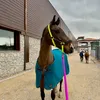Activities
Competitions
Ongoing
Discussions
This and That PS of Sweden
PS Official Archives
Win a Goodie Bag✨ Home
/
Ridely
Ridely
We are thrilled to announce our partnership with Ridely, the ultimate digital training companion for equestrians!
Discover a World of Training with Ridely:
• Explore Ridely's extensive video library for expert tips and tricks.
• Enhance your safety with Ridely's RideSafe tracker for live tracking when riding out alone.
• Plan and log your training sessions with the training calendar.
• Connect with the community and benefit from an AI knowledge coach.
Haven't tried Ridely's App yet? Elevate Your Riding Experience! Find it now on the App Store or Google Play.
Exclusive Offer for Equi Collective Members: Enjoy a 20% discount when you purchase a subscription on Ridely's website through this link https://app.ridely.com/shop/en/home/partner/ps-of-sweden.
Join us on this exciting journey with Ridely and elevate your riding skills to new heights! Stay tuned for more surprises and updates.
 Back to shop
Back to shop











